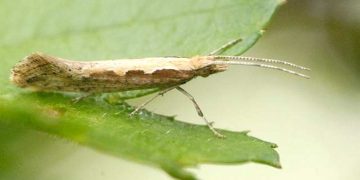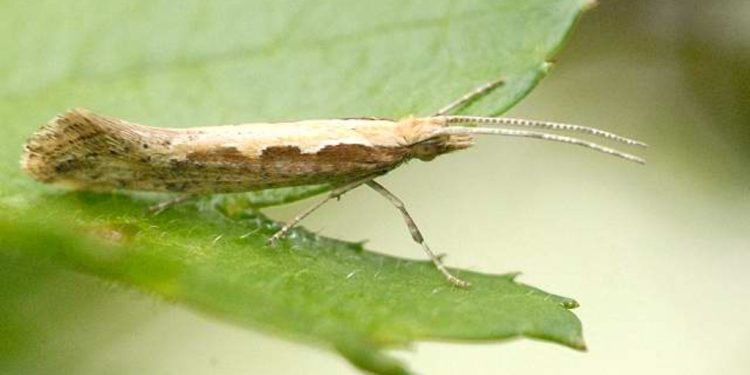#pestcontrol #integratedpestmanagement #agriculture #croplosses #environmentalimpact #healthimpact #diamondbackmothinfestation #Plutellaxylostella #IPM #alternativepesticides
The diamondback moth, scientifically known as Plutella xylostella, is a notorious pest that attacks cruciferous plants, including broccoli, cauliflower, and cabbage. Despite its small size, this moth has the potential to cause significant damage to crops, leading to severe economic losses for farmers and threatening food security.
The development of diamondback moth infestations can be rapid and devastating. Adult moths lay eggs on the underside of leaves, and once hatched, the larvae feed on the plant’s tissue, causing small holes and leaving behind a trail of excrement. As they grow, the larvae become more voracious and can strip the plant of its leaves, severely reducing its ability to photosynthesize and produce food. This can lead to stunted growth, reduced yields, and even plant death.
One of the most significant consequences of a diamondback moth outbreak is the financial impact on farmers. Infestations can lead to significant crop losses, with estimates suggesting that they can reduce yields by up to 90%. This can result in millions of dollars in economic losses, particularly for small-scale farmers who may not have the resources to invest in expensive pesticides or other control methods.
In addition to economic losses, diamondback moth infestations can also have broader environmental and health consequences. Pesticides used to control these pests can contaminate soil and water, potentially harming non-target species and even posing risks to human health. In some cases, the overuse of pesticides can lead to the development of pesticide-resistant strains of the diamondback moth, making it even more challenging to control.
To address the challenges posed by diamondback moth infestations, researchers and farmers are exploring a range of control methods, including cultural practices, biological control, and the use of alternative pesticides. Integrated pest management (IPM) approaches that combine multiple control methods have shown promise in reducing infestation levels while minimizing environmental and health impacts.
The diamondback moth is a significant agricultural pest that poses significant economic, environmental, and health risks. Addressing the challenges posed by these pests will require a combination of approaches that are effective, sustainable, and accessible to farmers of all scales.


































